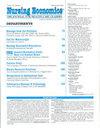医疗保险和医疗补助服务报销政策和护理敏感的不良患者结果中心。
IF 1
4区 医学
Q3 NURSING
Nursing Economics
Pub Date : 2016-07-01
引用次数: 0
摘要
医疗保险和医疗补助服务中心(CMS)的报销政策确定了11种可预防的不良后果。在这11个患者结局中,4个(严重压疮、跌倒和外伤、导尿管相关尿路感染和血管导尿管相关感染)被认为是护理敏感的结局,可以通过更好的护理来降低。一项横断面研究检查了CMS报销政策,重点关注护理敏感的不良患者结果。医疗保险患者的百分比作为衡量CMS报销变化的代理。由代理变量衡量的CMS报销政策与四种不良后果的减少无关。本文章由计算机程序翻译,如有差异,请以英文原文为准。
The Centers for Medicare & Medicaid Services Reimbursement Policy and Nursing-Sensitive Adverse Patient Outcomes.
The Centers for Medicare & Medicaid Services (CMS) reimbursement policy identified 11 preventable adverse outcomes. Of these 11 patient outcomes, four (severe pressure ulcers, falls and trauma, catheter-associated urinary tract infections, and vascular catheter-associated infections) are considered nursing-sensitive quality outcomes that can be decreased with greater and better nursing care. A cross-sectional study examined the CMS reimbursement policy focusing on nursing-sensitive adverse patient outcomes. The percentage of Medicare patients served as a proxy for a measure of the CMS changes in reimbursement. The CMS reimbursement policy measured by the proxy variable was not related to a reduction of the four adverse outcomes.
求助全文
通过发布文献求助,成功后即可免费获取论文全文。
去求助
来源期刊

Nursing Economics
医学-护理
自引率
16.70%
发文量
0
期刊介绍:
Nursing Economic$ advances nursing leadership in health care, with a focus on tomorrow, by providing information and thoughtful analyses of current and emerging best practices in health care management, economics, and policymaking. The journal supports nurse leaders and others who are responsible for directing nursing''s impact on health care cost and quality outcomes. The journal is published six times per year.
 求助内容:
求助内容: 应助结果提醒方式:
应助结果提醒方式:


